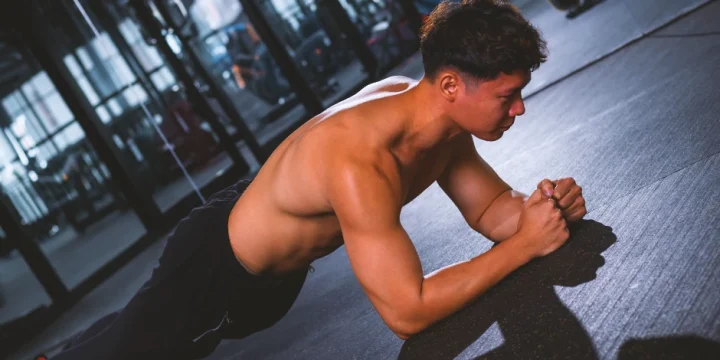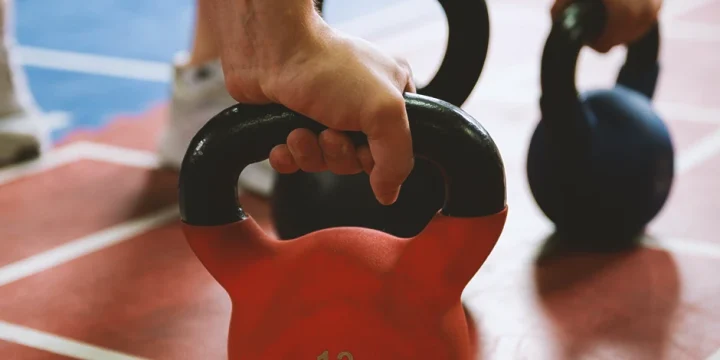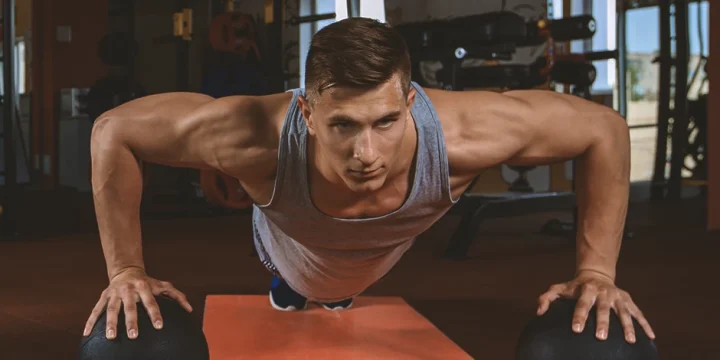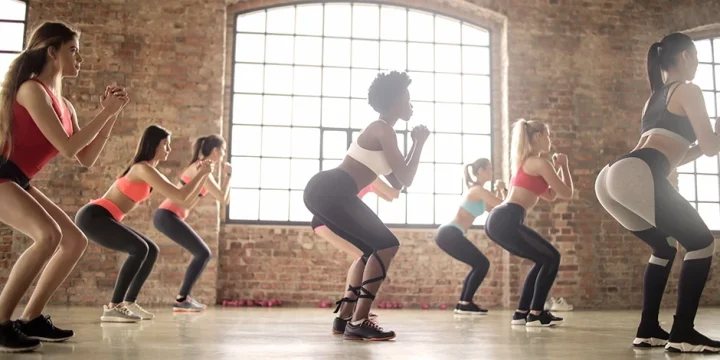You can tailor chest workouts to your specific fitness needs and goals to get the most out of each exercise.
However, with the variety of exercises, deciding which is best for your pecs can be confusing. This is why I've taken my time to extensively research and experiment with the best bodyweight chest workouts and equipment over the years.
According to my findings, a combination of free weights, resistance bands, and bodyweight exercises can make your chest muscles toned and muscular.
Quick Summary
- Incline and decline push-ups, dips, and star planks, among other bodyweight chest exercises, can help you build strong, toned pecs.
- You don’t need weights or a gym membership to strengthen and tone your pectoral muscles.
- According to WebMD, warming up for 10 minutes before any workout can reduce the likelihood of training-related injuries.
- From my perspective, the simplicity and effectiveness of bodyweight exercises make them an unbeatable choice for anyone looking to enhance their upper body strength.
9 Best Bodyweight Exercises for Pectoral Muscles

The best bodyweight chest exercises should effectively target the pectoral muscles with little or no equipment.
Effective warm-ups, combining dynamic stretching and foam roller pec stretches, reduce muscle strain and injury.
My coaching experience shows that incorporating mindfulness and focused breathing enhances workout effectiveness.
WebMD notes that these warm-ups also lower injury risks [1]. A 5- to 15-minute warm-up is crucial for proper chest exercise techniques.
“Overworking certain muscle groups (like the lats and teres major with a ton of pulling exercises or your pecs with a lot of benching) can create imbalances that further mobility restrictions and worsen pain.”
- Aaron Horsching, MD
Let’s dive right into them.
1. Incline Push-ups
The incline push-up requires an elevated surface such as a bench, chair, or staircase:
- Begin by placing your hands shoulder-width apart on the surface with your feet on the ground and your glutes tight.
- Ensure your elbows are rotated in and go down until your chest is just above the surface.
- Then, go up by pushing your body away from the surface until your arms are fully extended.
- Repeat theincline push-up motion for the desired number of repetitions.
You can modify this exercise by adjusting the inclined surface and including more reps. To get a quality workout, I recommend aiming for 3 sets of 15 reps.
2. Decline Push-ups
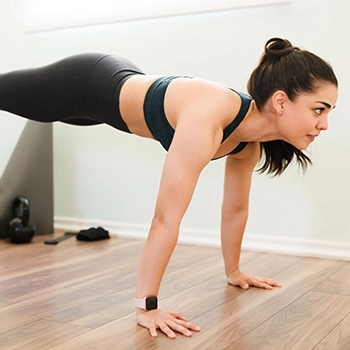
The next exercise is the decline push-up, another variation of the basic push-up:
- Place your feet on a raised surface, such as a bench, and your hands on the ground. This will put your body at a downward angle.
- Lower your body towards the ground while keeping your back straight.
- Bend your elbows to the sides and out at a 45-degree angle.
- Push your body up, and repeat.
To maximize the benefits of the decline push-up, I always advise my clients to perform the exercise slowly and with control.
3. Diamond Push-ups
Diamond push-ups are not for beginners. As an experienced health and performance coach, I recommend starting with regular push-ups first.
However, it’s a great home triceps workout:
- Get in a standard push-up position with your hands close together and your index fingers and thumbs forming a diamond shape.
- Lower your body down until your chest nearly touches the floor.
- Press back up to the starting position.
If you're advancing from the regular push-up, start by performing diamond push-ups on your knees or elevating your feet on a bench or chair.
You can check out our full step-by-step diamond push-up guide.
4. Dips
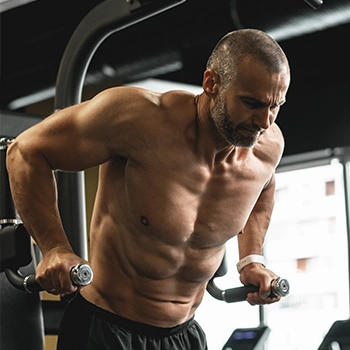
Dips are another great upper back strength training exercise.
Its push-up variations include the chest and triceps dip, targeting the chest muscles, triceps, and delts:
- Start seated with your hands on the edge of a bench or chair.
- Lift your body off the bench and lower yourself until your elbows are bent at a 90-degree angle.
- Then press back up to the starting position.
You can make the dips more challenging by increasing the number of repetitions or by adding more weight. I recommend 3 sets of 10 reps.
Related: Dips vs Bench Press
5. Plyo Push-up
The plyo push-up is an intense, dynamic workout that combines strength and speed to help build pec muscles, power, and endurance:
- Get in a standard pushup position with your hands and feet on the ground.
- Lower your chest to the floor, and then explosively push up with enough force to lift your hands off the ground.
- Once you’re on top of the pushup, clap your hands and immediately lower your body back to the ground.
- Repeat this motion for a set number of repetitions, according to your fitness level.

6. Resistance Band Push-Ups
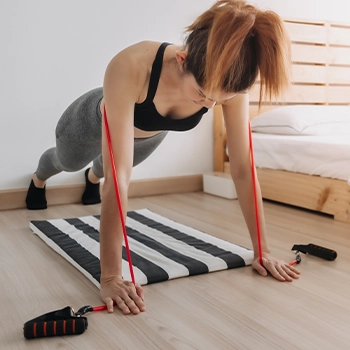
These are complex variations of push-ups. Research published by Sage Open Medicine has proven that elastic resistance provides similar strength gain to conventional resistance devices [2].
The resistance band strengthens the push-up, making the exercise more effective.
For this exercise:
- Get in a basic push-up position and wrap the resistance band around your upper body, around your back, and just below your shoulder blades.
- As you lower your body, the band will provide additional resistance, engaging the pectoral muscles and making the exercise more challenging.
- The band will provide support as you push back up, allowing you to engage in your desired repetitions while intensifying the exercise.
Related: Resistance Band Push-Ups: How-To, Variations and Benefits
7. Spiderman Push-ups
The Spiderman push-up is a high-intensity muscle training exercise that engages the chest muscles, shoulders, triceps, obliques, and quadriceps.
It’s one of my favorite full-body workouts:
- Start in a push-up position with your hands and feet on the ground.
- From there, stagger your hands and lower your torso to the ground.
- Bring one knee towards your elbow, at hip level. The hips should not touch the ground.
- Repeat several times (10–15 reps), and then push yourself back to the starting position and repeat with the other knee.
Keep your back straight and your core tight throughout the exercise for maximum benefit.
8. Standard Push-ups
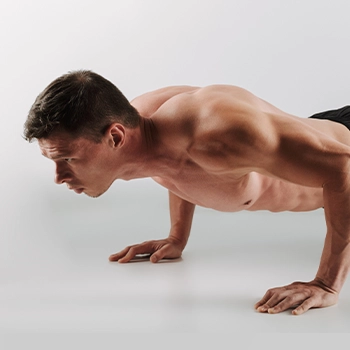
The standard push-up is simple to perform and requires no equipment.
It’s a great exercise if you’re starting a chest workout:
- Start on the ground with your arms extended, shoulder width apart, and feet together.
- Slowly lower your body until your chest lightly touches the ground, and then press back up.
- Elevate your feet on a raised surface or perform push-ups in a single-arm variation for an extra challenge. You can begin with your right or left arm.
Keep your body in a straight line, back straight, and core engaged while doing the exercise.
9. Star Plank
The star plank also targets the chest, shoulders, and core muscles and can be done virtually anywhere:
- Get in a side plank position, and then slowly extend the left arm and leg away from the body in opposite directions to form a star shape.
- Hold this position for 10-15 seconds, then switch arms and legs.
- Repeat the exercise for 3-5 sets of 10-15 seconds each.
Effective muscle building is a combination of regular workouts and proper nutrition.
As an experienced health and performance coach, I suggest beginning with a diet rich in protein, along with a diverse range of vitamins and minerals, to establish a strong base for muscle growth.
To further boost this process, incorporating high-quality protein powders as a supplement can significantly enhance chest development and overall muscle health.
Benefits of These Exercises
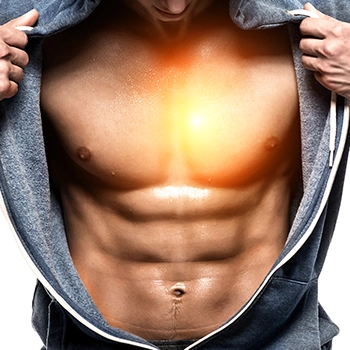
Below are some of the benefits of bodyweight chest workouts:
Build muscle mass. Bodyweight chest workouts use your weight as resistance, which can be effective in building lean muscle mass and improving entire body composition.
Enhanced joint stability. Beyond just muscle building, their role in enhancing joint stability and shoulder health is crucial for maintaining a balanced and functional upper body.
Convenient. These exercises can also be done anywhere without additional equipment, making them a convenient and cost-effective way to build strength.
Psychological benefits. Moreover, regular engagement in these exercises can yield psychological benefits such as reduced stress and improved mood, contributing to overall mental well-being.
Good for beginners and advanced trainers alike. You can easily modify them to suit your fitness level.
Core stability and coordination benefits. Furthermore, they are ideal for developing core stability and improving coordination and balance.
Related Articles:
FAQs
What Exercises Build Pecs the Fastest?
Exercises that build pecs the fastest include resistance band bench press, dips, and one-arm push-ups. However, keep the intensity of these exercises high to speed up the process.
How Can I Build My Pecs at Home?
You can build pecs at home by engaging in variations of push-ups, tricep dips, and bench presses, which target the chest muscles. Investing in a set of dumbbells or a resistance band can help you do more targeted exercises that work the pecs more effectively.
Can You Build Pecs Without Weights?
You can build pecs without weights. Body weight exercises such as regular push-ups, spiderman push-ups, dips, and chest touches can help you develop a muscular chest. Variety is key to achieving the desired results.
References:
- https://www.webmd.com/fitness-exercise/benefits-of-warmup-exercises
- https://www.ncbi.nlm.nih.gov/pmc/articles/PMC6383082/
About The Author
You May Also Like
